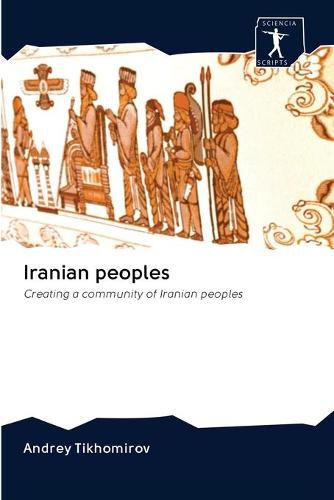Readings Newsletter
Become a Readings Member to make your shopping experience even easier.
Sign in or sign up for free!
You’re not far away from qualifying for FREE standard shipping within Australia
You’ve qualified for FREE standard shipping within Australia
The cart is loading…






This title is printed to order. This book may have been self-published. If so, we cannot guarantee the quality of the content. In the main most books will have gone through the editing process however some may not. We therefore suggest that you be aware of this before ordering this book. If in doubt check either the author or publisher’s details as we are unable to accept any returns unless they are faulty. Please contact us if you have any questions.
The ethnonym Iranians comes from the historical name Iran , derived from the ancient Iranian Aryan (land), (land) of the Aryans. Iranian or Aryan peoples are a group of peoples of common origin, speaking Iranian-speaking Aryan branch of the Indo-European family of languages, formed in the steppes of the Southern Urals - Black Sea Coast. The oldest population of Iran, in its western part, from the 4th millennium B.C. were Elamites, Kassites and their kindred tribes; part of them may be Hurrians. The languages of these tribes were not part of either the Semitic or Indo-European family of languages. The tribes that spoke Iranian languages appeared in Iran at the beginning of the 1st millennium B.C.. Gradually, it is planned to establish agricultural areas in a number of areas of Central Asia: in the Areya - along Tejen (Gerirud), Margiana - along Murghab, Bactria - in the upper reaches of the Amu Darya, Sogdiana - in the Kashka-Darya and Zaravshan, Khorezm (Khorasmiya) - along the lower reaches of the Amu Darya and near the Sarykamysh Basin. Both nomadic and sedentary tribes spoke the languages of the Iranian group of the Indo-European family. Many hydronyms (names of rivers) have a distinct character of the Aryan tribes - Daria (from Arya ).
$9.00 standard shipping within Australia
FREE standard shipping within Australia for orders over $100.00
Express & International shipping calculated at checkout
This title is printed to order. This book may have been self-published. If so, we cannot guarantee the quality of the content. In the main most books will have gone through the editing process however some may not. We therefore suggest that you be aware of this before ordering this book. If in doubt check either the author or publisher’s details as we are unable to accept any returns unless they are faulty. Please contact us if you have any questions.
The ethnonym Iranians comes from the historical name Iran , derived from the ancient Iranian Aryan (land), (land) of the Aryans. Iranian or Aryan peoples are a group of peoples of common origin, speaking Iranian-speaking Aryan branch of the Indo-European family of languages, formed in the steppes of the Southern Urals - Black Sea Coast. The oldest population of Iran, in its western part, from the 4th millennium B.C. were Elamites, Kassites and their kindred tribes; part of them may be Hurrians. The languages of these tribes were not part of either the Semitic or Indo-European family of languages. The tribes that spoke Iranian languages appeared in Iran at the beginning of the 1st millennium B.C.. Gradually, it is planned to establish agricultural areas in a number of areas of Central Asia: in the Areya - along Tejen (Gerirud), Margiana - along Murghab, Bactria - in the upper reaches of the Amu Darya, Sogdiana - in the Kashka-Darya and Zaravshan, Khorezm (Khorasmiya) - along the lower reaches of the Amu Darya and near the Sarykamysh Basin. Both nomadic and sedentary tribes spoke the languages of the Iranian group of the Indo-European family. Many hydronyms (names of rivers) have a distinct character of the Aryan tribes - Daria (from Arya ).